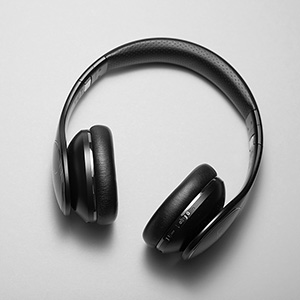For over thirty years, I have been playing many forms of world music on the touchstyle fretboard—a guitar-like instrument which is played by tapping the strings with the fingertips, making it possible to play a separate part with each hand. I was one of the first people to play the Chapman Stick®, the most widely known touchstyle fretboard. Today I play a customized Warr Raptor®, which evolved through five different kinds of tuning and stringing before it reached its current form. I have perf...
For over thirty years, I have been playing many forms of world music on the touchstyle fretboard—a guitar-like instrument which is played by tapping the strings with the fingertips, making it possible to play a separate part with each hand. I was one of the first people to play the Chapman Stick®, the most widely known touchstyle fretboard. Today I play a customized Warr Raptor®, which evolved through five different kinds of tuning and stringing before it reached its current form. I have performed in concerts and recordings with traditional musicians from many different cultures, including South America, Africa, China, and Ireland. But my greatest musical love has long been the Hindustani ragas of Northern India. I originally studied Hindustani ragas to find material for the fusion music I composed with harpist Diana Stork in the world music trio Geist. I performed this music at many well known concert halls, including Grace Cathedral, Great American Music Hall, the Yerba Buena center, and the Herbst Theater. Geist toured Europe, receiving international airplay and sales for their CD More Light. They were featured on the Polygram compilation album Harpestry, which reached the top ten on a Billboard chart, and has so far sold over 150,000 copies. But as time went by, I became more drawn to Hindustani music in its purest form. I took hundreds of classes with great Indian musicians, including Salamat Ali Khan, Habib Khan, K. Sridar, Laxmi Tewari, and especially the great sarod maestro Ustad Ali Akbar Khan. I became the music critic for India Currents magazine and wrote over a hundred articles on the many different styles of Indian Music. I interviewed great Indian musicians, including Pandit Jasraj, Hariprasad Chaurasia, Zakir Hussein, G.S. Sachdev, and Anoushka Shankar, from whom I received advice on how to improve my own playing. Finally I admitted to myself that I did not want to borrow bits and pieces of this music to create fusion—I wanted to play pure Hindustani Ragas. After years of practice and performance, I think I have now developed a style which adapts the deep and profound nuances of the Hindustani tradition to this brand new instrument. I believe that, like the double neck violin of L. Shankar and the slide guitar of Mohan Bhatt and Debashish Bhattacharya, the touchstyle fretboard is capable of both preserving and extending one of the world’s richest and most expressive musical genres. In fact, many Indians have said that hearing ragas played on my touchstyle fretboard gave them a greater appreciation of their own traditional music. For me, ragas are the most complete music of all. They have the intellectual subtlety of quantum physics, the spiritual profundity of the Vedas, and the heartfelt emotion of a lover’s cry. So much of our art and music separates these elements. A great performance of a raga brings all of them together in a single moment.
show more...